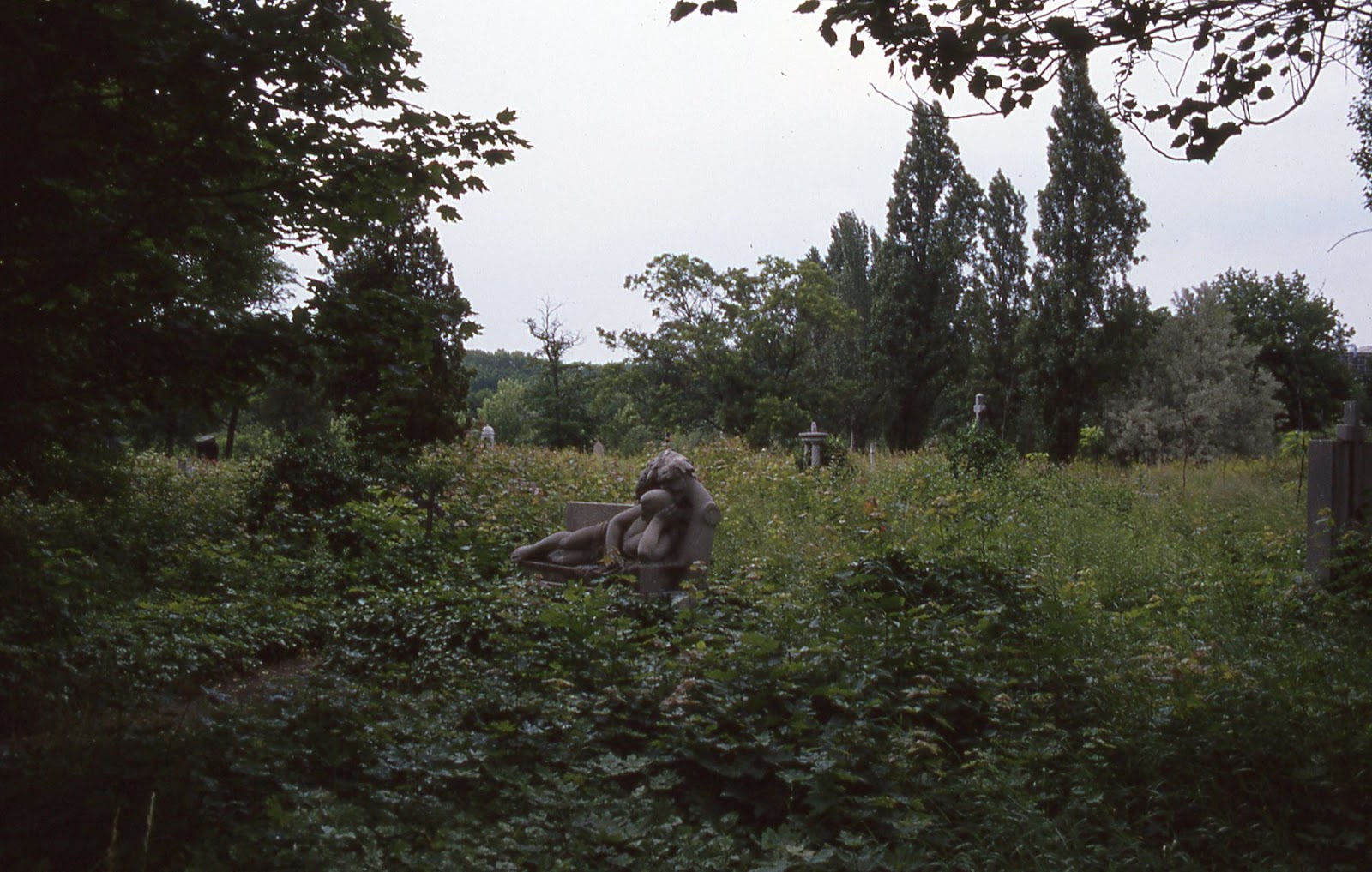
Previously: THE BEER BEAT: 30 years ago today, labels from beer hunting in Red Hungary … and töltött káposzta at Czarnok Vendéglő.
The basics, according to Lonely Planet:
Budapest’s equivalent of London’s Highgate or Père Lachaise in Paris, this 56-hectare necropolis was established in 1847 and holds some 3000 gravestones and mausoleums, including those of statesmen and national heroes Lajos Kossuth, Ferenc Deák and Lajos Batthyány. Maps indicating the location of noteworthy graves are available free at the entrance. Plot 21 contains the graves of many who died in the 1956 Uprising.
According to numerous recent photographs available for viewing on-line, Kerepesi Cemetery is a pristine place these days.
We are only 600 meters away from the polluted bustle of Budapest’s Keleti station but we could be on the other side of the world. Kerepesi cemetery is a nature reserve, a botanical garden and a history museum – the perfect place to escape for a moment of peace and reflection when the city hysteria becomes overwhelming.
It was much this way in 1987, though far “wilder” in the context of a nature reserve. The gist of it is that during the period of Communism, vast sections of the cemetery were neglected and allowed to become overgrown, and there was even talk of demolishing it, precisely because it represented the “bad” (pre-Communist) history of Hungary.

As this instructive essay explains, even the Communists themselves weren’t able to decide exactly how to bury their movement’s own martyrs, especially amid ever shifting ideological winds. You remained quite dead, but one deceased day you were “in,” and the next you were “out.”
For many decades, the Pantheon of the Labour Movement situated in the Kerepesi Cemetery of Budapest was regarded by the then ruling Hungarian Communist Party as one of its principal commemorative constructions. Nowadays the building stands abandoned.
On the day of my visit to Kerepesi Cemetery, one perfectly clear message emerged. The graves of the Red Army soldiers who died during the course of liberating (and subsequently occupying) Hungary at the end of World War II were kept immaculate.

As time passed and the extent of my travels widened, cemeteries became a marquee attraction for me. Different cultures do death differently. In Budapest in 1987, my Kerepesi visit lasted only an hour or two.
For whatever reason, perhaps the contrast alone, Lieutenant N.J. Bobkov’s marker has stuck with me during all the years since.
Previously: 30 years ago today: The time when the ghost of Yuri Andropov tried to punch me out, up in the Buda Hills.











